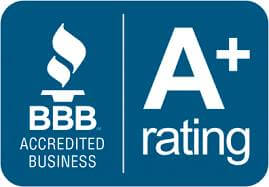Interested In Discussing Your Social Security Case?
Contact Us for A FREE Evaluation of Your Disability Case!
Medical Conditions Eligible For Social Security Disability
Do you have a medical condition that restricts your ability to work? You may be wondering if you are eligible to receive Social Security Disability benefits (SSD/SSDI) or Supplemental Security Income (SSI).
The Social Security Administration (SSA) is the agency that oversees these benefits and reviews applications. Bear in mind that the SSA does not simply check whether you have a medical condition – it will decide to approve or deny your claim based on how much your condition causes functional limitations.
For your application to be successful, it is wise to know what illnesses are eligible for disability benefits and what the specific functional limitations the SSA looks for in your condition.
Below is a partial list of medical conditions that are eligible for Social Security disability benefits. Click on each specific condition to know more about it and its SSA requirements.
Note: This is *not* an exhaustive list. Any medical condition that prevents you from working and passes the SSA eligibility criteria can potentially make you eligible for Social Security Disability Benefits.
Back Pain
- Degenerative disc disease
As you grow older, the soft disks that cushion the bones of your spine can gradually wear out. If this causes you debilitating pain, it may be considered a degenerative disease. - Herniated disk
This condition is centered on any of your spinal discs, which are small donut-like tissues between the bones of your spine. If a spinal disk tears, the soft matter inside it pushes out or “herniates”. You may also know this condition as “slipped disc” or “ruptured disc”. - Nerve root compression
Also called “pinched nerve”, this condition occurs when a nerve is compressed between ligaments, tendons, and/or bones. It can often happen to the nerve root on your spine, causing pain to the neck area or lower back. This condition is also associated with sciatica and lumbar radiculopathy. - Scoliosis
This refers to the abnormal sideways curve of the spine. It typically starts just before puberty and often does not cause health problems. But if untreated, the spinal curve may worsen over time and affect the functions of surrounding organs such as the lungs and heart. - Spinal arachnoiditis
The key symptoms of arachnoiditis are severe stinging and burning pain. These result from the inflammation of a membrane called the arachnoid, which protects the nerves in your spinal cord. - Spinal stenosis
This condition occurs when the space within your spine (the spinal canal) narrows, putting pressure on the nerves that pass through that space. It can cause not only back pain but also numbness and motion problems on the leg or feet.
Cancer
As many forms of cancer are very serious and life-threatening, the SSA offers another way to obtain benefits aside from going through its regular disability evaluation. This faster process is called the Compassionate Allowances program. Here, you may be able to skip the regular eligibility requirements, and the SSA, together with experts, will quickly assess your condition. Here are some cancers that may qualify under the CAL program:
- Adrenal cancer
- Adult non-Hodgkin lymphoma
- Adrenal cancer
- Bladder cancer
- Bone cancer
- Breast cancer
- Carcinoma of unknown primary site
- Child lymphoma
- Esophageal cancer
- Gallbladder cancer
- Kidney cancer
- Large intestine cancer
- Leukemia
- Liver cancer
- Lung cancer (non-small cell)
- Ovarian cancer
- Pancreatic cancer
- Prostate cancer
- Skin malignant melanoma
- Small cell cancers
- Spinal nerve root cancer
- Stomach cancer
- Thyroid cancer
- Ureter cancer
There are more cancers and other serious illnesses that fall under the Compassionate Allowances program. Click here for the full official list by the SSA.
Diabetes
Diabetes refers to any of the certain diseases involving the level of glucose (blood sugar) in your body and how it is regulated by the hormone insulin. There are two major types: Type 1 occurs when your immune system wrongly attacks the insulin-producing cells in your pancreas. Type 2 diabetes, which is the more common type, happens when your cells become resistant to insulin, likely due to genetic, environmental, and dietary factors.
Head Injuries
These include concussions/contusions and other traumatic brain injuries (TBI). It can either be an open or closed head injury.
Heart Diseases
- Aneurysm
The blood vessels are tubular structures that carry blood throughout our body. When a blood vessel is weak or damaged, it can create a bulge called an aneurysm. Many aneurysms occur on the aorta, a large blood vessel that delivers oxygenated blood from the heart. - Congestive heart failure (CHF)
This is an umbrella term that refers to various forms of heart failure involving the congestion of fluids in the body. The congestion happens when the heart weakens and fails to pump blood efficiently, causing the kidneys to retain more fluid. - Coronary artery disease (CAD)
When a disease attacks the arteries, it can reduce the blood and oxygen supply that these arteries bring to the heart. Two common types of CAD are atherosclerosis, where fat and calcium build up in the arteries, and arteriosclerosis, where plaque deposits harden the arterial walls. - Heart attack
A heart attack is medically known as a myocardial infarction (MI). This is a result of a prolonged lack of oxygen supply to the heart, damaging the heart muscle. - Heart transplant
The SSA may consider you disabled for at least one year following your heart transplant surgery. - Recurrent Heart Arrhythmias
Arrhythmia is the medical name for an abnormal heartbeat. Some arrhythmias are harmless, but more serious cases can cause shortness of breath, dizziness, and lack of blood flow to vital organs like the brain.
Joint Pain/Arthritis
- Osteoarthritis
This is the most common form of arthritis in the world, typically occurring as people age. It is when the cartilage (cushioning tissue) that protects the ends of your bones wear out over time, making your movements painful. - Rheumatoid arthritis
This is an auto-immune disorder, which means that your body’s immune system mistakenly attacks your own tissues – in this case, your joints. As a result, the lining of your joints get inflamed (swollen), causing you pain.
Liver Disease
- Cirrhosis
When something injures the liver, such as chronic alcoholism and hepatitis, the liver tries to repair itself and develops scar tissues. The late-stage scarring of the liver is called cirrhosis. The more scar tissues form, the more difficult it is for the liver to function normally. - Hepatitis
This is the inflammation (swelling) of the liver, usually caused by a virus. The most common types are Hepatitis A, B, and C. Hepatitis A is present in waste materials (feces) from infected persons and is thus often transmitted through contaminated food or drink. Hepatitis B is transmitted via infected bodily fluids such as blood and semen, while Hepatitis C is passed on mostly via infected blood only. - Non-alcoholic fatty liver disease (NAFLD)
This refers to the accumulation of fat in the liver (steatosis) caused by factors other than excessive alcohol consumption. One type of NAFLD is simple fatty liver, where fat accumulates in the liver but does not cause inflammation or damage. Another type is non-alcoholic steatohepatitis (NASH). Here, the fat in the liver has caused inflammation and possible damage to liver cells.
Lung Diseases/Respiratory Disorders
- Asthma
Asthma is a common disease where the airways are inflamed or narrowed. One of the SSA requirements to get asthma disability benefits is that you must have asthma attacks at least once every two months. - Chronic obstructive lung disease (COPD)
This term refers to any of the chronic diseases involving an obstructed airflow to or from the lungs. These diseases make it hard to breathe and may be life-threatening in certain cases. Examples of COPD are bronchitis and emphysema. - Cystic fibrosis (respiratory)
This genetic, progressive disease involves the mucus that should normally serve as lubricant in the respiratory system. The disease makes the mucus thick and sticky, causing it to plug up ducts and airways. Over time, it can cause permanent lung damage. - Emphysema
This long-term progressive disease centers on the over-inflation of the air sacs in the lung called the alveoli. It causes shortness of breath and sometimes, a chronic cough. - Restrictive lung disease (RLD)
This is an umbrella term for disorders that make it difficult for you to fully expand your lungs with air. Some conditions under this category are scoliosis, obesity, interstitial lung disease, and sarcoidosis. - Stroke-related respiratory issues
If you have suffered a stroke that consequently affected your breathing, the SSA may consider you for disability. They will base their decision primarily on lung capacity tests to confirm that your breathing issue is severe enough to warrant benefits.
Mental Disorders
- Anxiety disorders
This term refers to any of the mental conditions characterized by substantial feelings of anxiety or fear. These feelings are so strong that involve physical symptoms like shakiness and increased heart rate. - Bipolar disorder
This mental condition causes unusual changes in mood, energy, and activity levels. If you have this disorder, you experience periods of extremely elated and energized behavior (manic episodes) alternating with extremely sad or worn-out periods (depressive episodes). Because of this, bipolar disorder is also called manic-depressive illness. - Depression
Also known as major depressive disorder or clinical depression, this is a serious medical disorder that negatively affects your moods. It involves feelings of sadness and/or losing interest in activities you used to enjoy. Severe cases may also trigger thoughts of suicide. - Post-traumatic stress disorder (PTSD)
This mental health problem can develop if you have experienced or witnessed a life-threatening event such as war combat, a car accident, sexual assault, or a natural disaster. If you have PTSD, your feelings of distress last much longer, may start later, or may come and go over a long time. - Schizophrenia/Schizoaffective disorder
Schizophrenia is a severe mental illness involving psychotic symptoms such as delusions or hallucinations. Meanwhile, schizoaffective disorder is a mental illness where a person has a combination of schizophrenia symptoms and mood disorder symptoms. The mood disorder can either be depression or bipolar disorder. - Borderline personality disorder (BPD)
Also called emotionally unstable personality disorder (EUPD), this mental illness shows in a long-term pattern of unstable emotions, unstable sense of self, and notably unstable relationships. Some key manifestations are impulsive actions and relationship problems. - Attention Deficit Hyperactivity Disorder (ADHD/ADD)
ADHD is a mental disorder that causes you to have trouble concentrating, paying attention, and controlling your impulses. It typically starts during childhood and can remain until adulthood.
Multiple Sclerosis (MS)
Multiple Sclerosis is a highly disabling disease that occurs when there is a disruption of the flow of information (or signals) between your brain and body. It results from the damage to the myelin sheath, which is a protective material around your nerve cells. This causes problems in how the nerve cells carry signals from your brain to your body and vice versa. The disease has a wide range of symptoms including problems in limb movement, problems in eyesight, slurred speech, and bladder issues.
Parkinson’s Disease
Parkinson’s Disease is a degenerative and progressive disease that happens when there is a loss of brain cells that produce the chemical dopamine. Parkinson’s is a movement disease that may start as a slight shaking (usually of the hands) and progresses into muscle rigidity, changes in speech, and changes in gait (walking). Since there is no cure as of now, the disease may keep worsening over time.
As mentioned, being diagnosed with any of these medical conditions is not enough. You must show the SSA that your condition severely affects your functioning and that it meets the SSA’s criteria for disability.
We at the Gillette Law Group can help you do this. Whether this is your first time applying for disability benefits or you are already appealing a previously-denied claim, we can assist you in putting together a highly effective application. We have done this for numerous applicants like you over the years, successfully enabling them to receive the benefits they need and deserve.
Your disability application may involve deadlines, so please don’t hesitate to talk to us as soon as possible. Your consultation with us is free. Talk to us today at (855) 873-2604.








